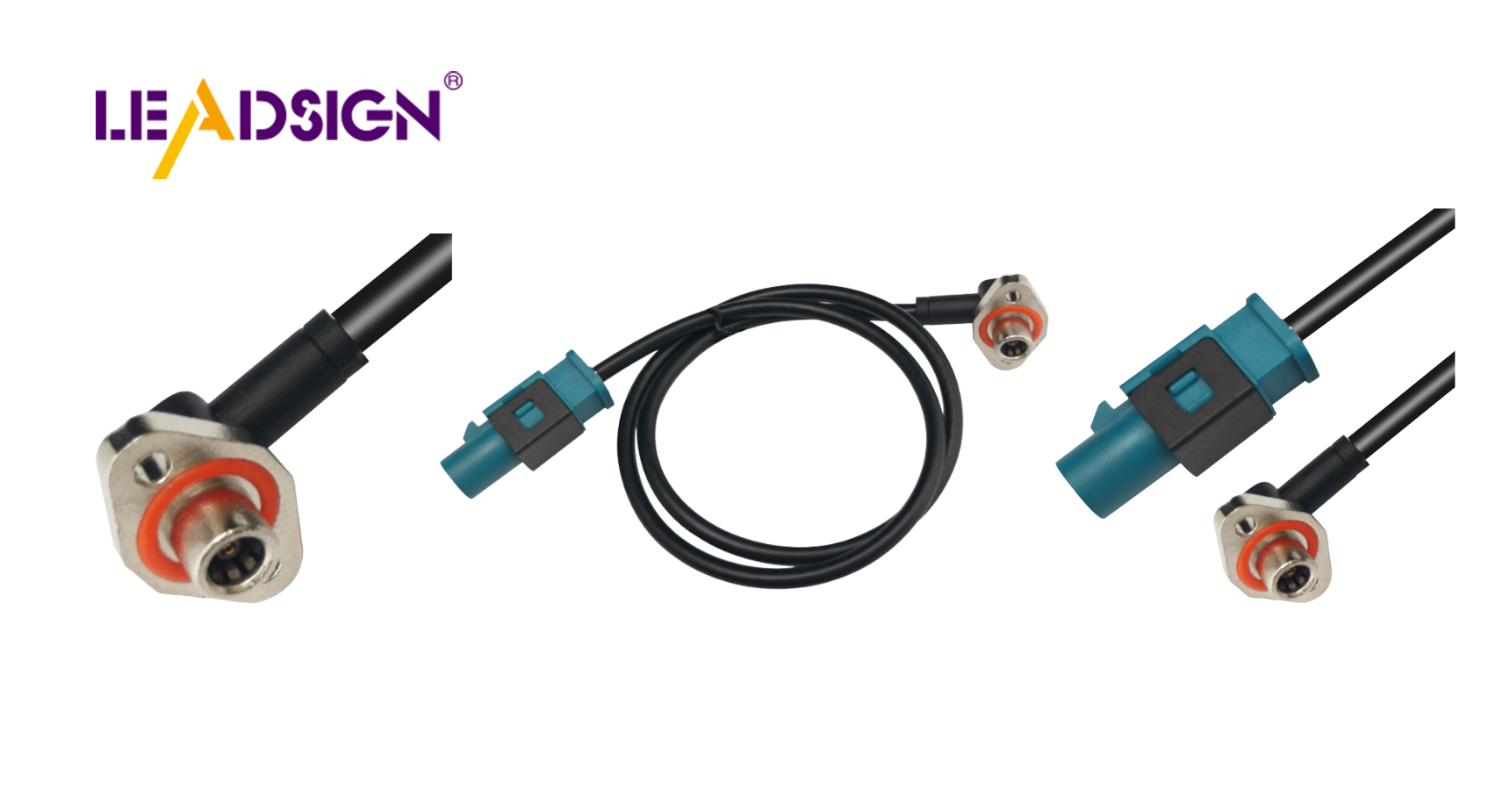Challenge Rigid Coax Myths in Auto Wire Connector Types

Some think rigid coax cables are the best for cars. But, they forget about semi-rigid coaxial cables. These cables have better insulation and shielding. This makes them good for high-frequency uses. Rigid coax cables last long and work well. Yet, semi-rigid ones also have special advantages. They aren't very bendable but still work great electrically. This shows that rigid coax isn't the only option for car needs.
Understanding Semi-Rigid Coaxial Cables
Characteristics of Semi-Rigid Coaxial Cables
Flexibility and Structure
Semi-rigid coax cables are special because of their design. They have a strong outer layer that helps them work well. This makes them less bendable than other cables. Once bent, they stay in that shape. This is good for places where the cable needs to stay put.
Material Composition
These cables use PTFE material inside. This helps them work better with high frequencies. The solid shield improves signal strength and accuracy. They are great for microwave uses because they handle power well.
Applications in Automotive Connectors
Common Uses in Vehicles
In cars, semi-rigid coax cables are used a lot. They connect GPS and radio antennas and other systems. They can handle very high frequencies, which is important for these tasks.
Compatibility with Automotive Systems
These cables fit well with car systems. They give great signal quality even if they don't bend much. They are stable and reliable, making them a top choice for many car uses.
Comparing Semi-Rigid and Rigid Coaxial Cables
Flexibility vs. Rigidity
Impact on Installation
Semi-rigid cables are both flexible and stable. They can be bent by machines or by hand with tools. This is good for places where the cable must stay in a certain shape. Rigid cables have fixed bends called elbows, which makes them less flexible to install. These are best for strong connections inside buildings.
Suitability for Different Environments
The place you use the cable matters a lot. Semi-rigid cables are great when you need strong signal protection. They work well where keeping signals clear is very important. But they don't handle bumps and shakes as well as bendy cables do. Rigid cables are needed for sending TV, FM, and microwave signals far away indoors. They are strong and last long in steady places.
Durability and Performance
Longevity in Automotive Applications
In cars, coaxial cables need to last long. Semi-rigid ones have a solid outside that helps them work better at high frequencies. Once bent, they keep their shape for good performance over time. Rigid ones are tough but not as easy to fit into tight car spaces because they can't bend easily.
Performance Metrics
Coaxial cable performance includes power handling and frequency range. Semi-rigid ones, though small, work great at high frequencies and can connect to many types of ends like SMA or TNC, making them useful in many ways. Rigid ones handle lots of power over long distances indoors but aren't meant to bend much.
Busting Myths About Semi-Rigid Coaxial Cables
Myth: Rigid Cables Are Always Stronger
People think rigid cables are the toughest. But tests show something else. Semi-rigid cables are strong in many situations. Their hard outside keeps them safe from weather. This makes them good for car use where strength is key.
Real-Life Strength Tests
Many tests show semi-rigid cables can handle tough spots. They face heat and shaking in these tests. Results show they stay strong over time. This makes them a good pick for car systems.
Car Use Examples
Some studies show how well semi-rigid cables work in cars. They do great in GPS and radio setups. These cables send signals clearly at high frequencies. Once bent, they keep their shape, which helps in tight spaces.
Myth: Semi-Rigid Cables Aren't Good Enough
Some say semi-rigid cables don't work well. But they have great electric features instead. They stop signal problems, giving clear transmissions.
Comparing How They Work
Semi-rigid cables often beat rigid ones in tests. They block signal loss better, which helps with performance.
Meeting Industry Rules
Semi-rigid cables follow strict rules and pass hard tests to prove they work well everywhere.
Benefits of Semi-Rigid Coaxial Cables in Cars
Better Flexibility for Hard Installs
Fitting in Small Spaces
Semi-rigid cables fit well in small car spaces. They stay bent after being shaped, which is great for tight spots. Unlike rigid cables that need fixed bends, these can wrap around things easily. This makes them perfect for tricky car areas without losing their function.
Faster to Install
Semi-rigid cables are quick to put in. You can bend them as needed, so you don't need extra parts. This saves time and lowers mistakes during setup. Car makers can build faster and get cars ready sooner.
Cost and Energy Savings
Cheaper Materials
These cables cost less to make than rigid ones. They use fewer materials, cutting down costs. No need for extra parts like elbows saves even more money. This makes them a smart choice for budget-friendly car builds.
Saves Energy
Semi-rigid cables use energy well in cars. They work better at high frequencies with less energy loss. This means saving power while still working great. Using these helps cars run efficiently and meet green goals.
Semi-rigid coax cables are better than rigid ones for cars. They work well with high frequencies and block signals well. These cables can bend and fit in small spaces, unlike rigid ones. This makes them easier and cheaper to install. Experts from MegaPhase and Coaxicom say they are very reliable. As cars use more high-frequency systems, these cables are important for saving money and working efficiently.
See Also
Why FAKRA Coaxial Cables Matter in Automotive Design
Harnessing the Strength of FAKRA Coaxial Connectors
Exploring the Flexibility and Advantages of FAKRA Connectors

